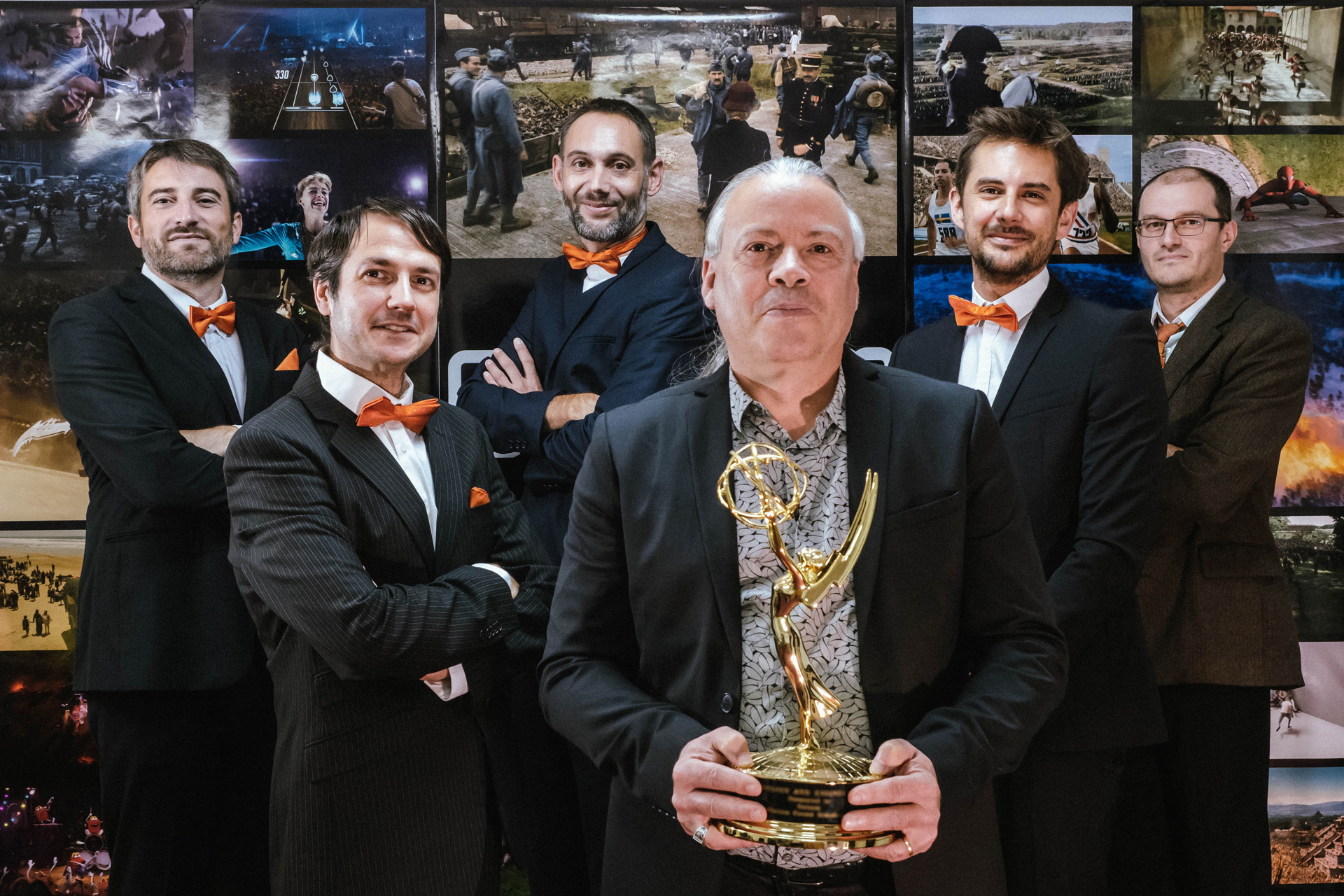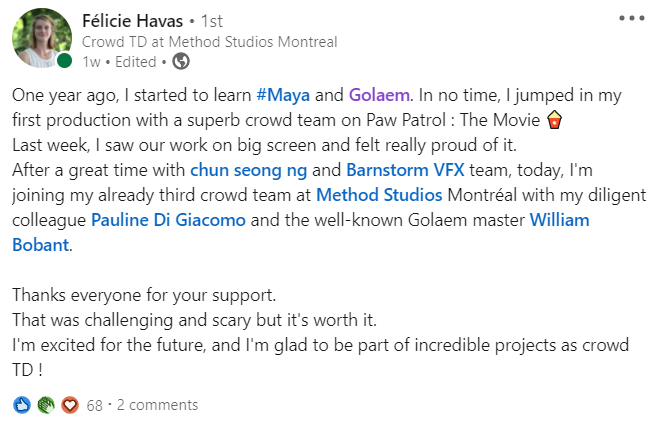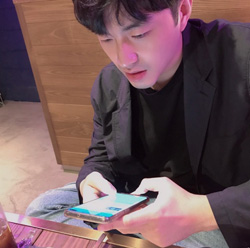Golaem releases Golaem 8, making its crowd simulation engine available in Unreal Engine, and enhancing its already advanced Previs/Layout capabilities.
Recently awarded with an Engineering Emmy Award® acknowledging its contribution to the Television industry (among other productions Game of Thrones, The Walking Dead, Lovecraft Country, Love Death & Robots...), Golaem stays at the bleeding edge of innovation and makes its crowd simulation features available within Unreal Engine in real-time, facilitating interactive usage and Unreal Engine based creation workflows.
Golaem 8 also increases the crowd previsualization quality inside the Maya viewport while keeping Golaem great performances. Nicolas Chaverou, Product Manager explains: “Golaem is used by more and more animation studios for all kinds of TV Shows and Feature Films, for example The SpongeBob Movie: Sponge on the Run, Invincibles, Jurassic Park Camp Cretaceous, or My Little Pony: A New Generation…. They need to match a precise ambiance for their shots, and have more advanced needs in terms of character previsualization. I think they will be delighted with the previsualization novelties in Golaem 8. Coupled with the new Layout layers, this will really make it even easier for them to validate their crowds before rendering, and iterate faster.”
Real-Time Simulation in Unreal Engine
Real-Time Simulation Engine
Golaem simulations can now be executed in real-time within Unreal Engine, reacting to player actions, or taking into account changes in the environment.
This new workflow speeds up scene creations in Unreal Engine and makes it possible to use Golaem character simulation capabilities for interactive use.
Interaction with Unreal Engine Blueprints
The new Golaem execution engine integrated into Unreal Engine includes Golaem Blueprint nodes, making it possible to create interactions between Golaem and Unreal Engine.
This Blueprint integration can be used to trigger events in the Golaem Simulation, or to override placement or simulation parameters.
Unreal Engine Character Pack
To facilitate the use of Golaem into Unreal Engine, all characters from the Golaem Character Pack are available as ready-to-use Unreal Engine characters, complete with shaders diversity.
It literally just takes one minute to setup a Golaem scene in Unreal Engine with fully diverse characters.
Viewport Previsualization Improvements
Visual Diversity in the Viewport
Golaem 8 implements shading diversity for all characters, directly in the Maya viewport, while keeping the same performances which made its reputation.
Artists will be able to validate the look of their crowd characters directly at simulation step, and use the Golaem Layout layers to override it if needed.
Shading Diversity Weights Control
To make shading repartition more controllable for artists, shading diversity has been made controllable thanks to weight sliders similar to the ones used asset repartition.
It will help artists come even closer to the final look they desire for their crowd, which can always be 100% artistically controlled thanks to the Golaem Layout shader overrides nodes.
Mesh Drive Display Mode
Golaem features a new Mesh Drive display mode, generating real Maya geometry for all characters, including all deformations.
Artists can check the final look of their scenes before even rendering. Cherry on the cake, thanks to the Mesh Drive display mode, Golaem characters are now renderable with any renderer!
DOF / Fog Support in the viewport
Golaem 8 adds support for Maya viewport depth of field and fog features with Golaem characters display in order to enhance previsualization quality.
Triggers Visual Feedback
Enhancing Golaem visual debug capabilities, Golaem 8 can now display in real-time the behavior triggers status in the Behavior Editor.
Artists can click on any character in the crowd and follow how their behavior is executed, check when events trigger a behavior or not, and debug blocked behaviors.
New Layout Layers
Group Trajectory Edit Layer
The Trajectory Edit layer is back! Golaem characters trajectories can be edited after simulation based on director's feedback, or to adapt to changes in the environment.
The Trajectory Edit layer features two modes: mesh based and curve based. The mesh based mode enables deforming trajectories with tools like the Lattice Deformer. Curve based mode will be used to draw trajectories with curves, with the added advantage of being able to preserve characters speed while deforming their trajectory.
Group Snap-to Layer
Golaem Snap-To Layer enables to re-populate a scene with the Golaem Layout Tool. With the Group Snap-To layer artists can place a group of people on each user-defined position.
As in the example video, it is particularly useful to populate a battle scene with groups of soldiers!
Mirror Layout Layer
The Mirror Layer will mirror a simulation cache geometry and animation.
It can be used to adapt an existing cache to a new environment or script, but also on random characters in your scene to generate even more diversity.
New Keyframable Attributes
Golaem 8 Layout Tool can take keyframes into account on two new layers: Kill and SetMeshAssets.
Thanks to the keyframable Kill layer, characters visibility can be animated during the shot in order to make the population evolve.
With the SetMeshAssets Layer, characters' equipment or garments can also evolve during the shot.
Custom LOD Layers
Golaem provides some rules for automatic LOD, but when dealing with LOD, isn’t it more comfortable to set them by directly selecting characters in the viewport?
This is what the new LOD layers are about! Just select some characters, add a Layout node, set the desired LOD level, and you are done.
Physics / Cloth Simulation
Torque on Force Behavior
A Torque attribute was added on the Force Behavior. It brings more realism in the physics simulation and allows artists to control how your characters react to an explosion or other kind of physics events.
GPU Real-Time Simulation for Windows/Linux
Thanks to its NVidia Apex integration Golaem can simulate clothes in real-time with many characters.
Through a partnership with NVidia & Autodesk, Golaem is maintaining the Physx/Apex plugin code and hosts builds for Windows & Linux and for new versions of Maya.
And still...
Morphology Variations
Golaem provides morphology variations thanks to the Skeleton Overrides feature.
Several kinds of morphologies (small, tall, thin, fat...) can be added on a character definition by setting scale ranges for every bone. Users can then control their repartition the same way as other assets, and they can even be mixed to obtain the maximum of variations inside a population.
The generated characters definitely look more diverse and natural.
Fur Workflow
Golaem includes an advanced procedural fur workflow with skinned fur which can be deformed along the character animation and bone chains.
This workflow is compatible with most of the major fur simulation solutions (Xgen, Yeti, Ornatrix,…) and proprietary engines provided they can be imported within Maya as curves (or Alembic curves).
Houdini Workflow
Golaem simulations can be brought into Houdini with a dedicated plugin expanding them to real Houdini geometry. The Golaem for Houdini plugin comes with the Golaem Cache Library and Layout Tool for easy imports and modifications directly in Houdini.
Look! Golaem characters can even be rendered with Mantra!
USD Procedural
Golaem includes a procedural plugin for Pixar’s USD, efficiently loading Golaem characters in the USD pipeline, therefore making them directly usable in many digital content creation tools supporting USD.
The Golaem for USD procedural plugin is available for USD Standalone, Houdini and Katana. The procedural code is open source for studios who need to build it themselves.
Golaem 8 is compatible with all Maya versions from 2018 to 2022 and provides integrations with 3dsMax, Houdini, Katana, Unreal Engine, and all USD-compatible platforms, like Unity or NVidia Omniverse.
The Golaem Crowd Simulation Real-Time simulation engine is available through Golaem for Unreal Engine or as a standalone C++ SDK.
Want to try Golaem for free??!
Download Golaem PLE version




